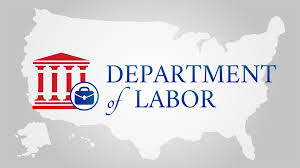Not sure? View more search options. Choose one or multiple.

DOL Offers Second Set of FAQs to Provide Employers More Clarity on Upcoming Federal Paid Sick and Family Leave Obligations
On March 26, the U.S. Department of Labor (DOL) released additional FAQs that further explain an employer’s obligation under the Families First Coronavirus Response Act (FFCRA). The new questions follow the first set of FAQs that we highlighted here.
- DOL explains that employees must support leave requests with appropriate information, including name, qualifying reason for leave, a statement that the employee is unable to work or telework for that reason, and leave dates.
- Employees must provide documentation supporting their absence (a copy of the quarantine or isolation order, written documentation from a healthcare provider advising self-quarantine, etc.
- For employees using leave to care for a child, examples of supporting documentation include a notice posted on a government, school, or day care website, or published in a newspaper, or an email from an employee or official of the school, place of care, or child care provider.
- The DOL advises employers to keep this information if they intend to seek tax credits for providing paid leave and advises employers to consult the IRS applicable forms, instructions, and information for the process they need to follow. For more on available tax credits read Martin Pringle's article, CORONAVIRUS AID, RELIEF AND ECONOMIC SECURITY (CARES) ACT: AN OVERVIEW
- DOL explains that being “unable” to work or telework means that an employer has work available, but one of the specified paid reasons for leave prevents the employee from being able to do so.
- Generally, employees and employers may agree to intermittent and incremental use of emergency paid sick leave and emergency paid FMLA leave, but the DOL guides the guidance into two situations: whether the employee is teleworking or working onsite
- For employees who are teleworking, whether using paid sick leave of expanded FMLA leave, the employer and employee may agree to intermittent leave for any of the covered reasons
- For employees who are working on the employer’s premises, intermittent paid leave is only permitted for employees who are taking leave for school closures or childcare unavailability.
- Per the DOL, if the worksite closes, employees do not receive or continue to receive FFCRA leave. This is true whether the worksite closes due to lack of business or a federal, state, or local directive. If this occurs, the employee’s recourse is unemployment benefits.
- According to the DOL, shelter-in-place and business closure orders do not likely support the need for emergency paid sick leave. The DOL appears ready to deny paid sick leave to those covered by those orders.
- In FAQ #27, the DOL notes: If, prior to the FFCRA’s effective date, your employer sent you home and stops paying you because it does not have work for you to do, you will not get paid sick leave or expanded family and medical leave but you may be eligible for unemployment insurance benefits. This is true whether your employer closes your worksite for lack of business or because it is required to close pursuant to a Federal, State, or local directive.
- In FAQ #27, the DOL states: If your employer reduces your work hours because it does not have work for you to perform, you may not use paid sick leave or expanded family and medical leave for the hours that you are no longer scheduled to work.
- Employees can use leave for scheduled hours only.
- Health coverage continues during leave in accordance with existing FMLA standards.
- According to the DOL, employers and employees must agree in order to use FFCRA paid leave and existing employer-provided leave benefits simultaneously and use the latter to "top up" the deficit that may result when FFCRA leave pays out at two-thirds an employee's regular rate (and that employers cannot require this without the employee’s consent). While this supplementation may be allowed if employees and employers agree, the DOL reminds employers that the law limits the employer tax credit to the amount of FFCRA leave an employer must provide, so tax relief is unavailable for the "top up."
Martin Pringle employment attorneys will continue to monitor developments and guidance related to the COVID-19 crisis.
See All COVID-19 News